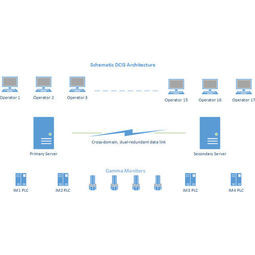Machine Condition Monitoring

Machine condition monitoring is the process of monitoring parameters such as vibration and temperature in order to identify changes that indicate a reduction in performance or impending fault. It is a necessary component of Predictive Maintenance solutions and allows maintenance to be scheduled prior to failure, or other actions to be taken to prevent damages to the machine and loss of production. Condition monitoring also provides value beyond improving maintenance schedules. For example, improved visibility into machine operations can indicate the root causes of product defects and can support optimization of energy consumption.
- Equipment & Machinery
- Discrete Manufacturing
- Maintenance
The machine condition monitoring market was valued at USD 2.21 billion in 2017 and is expected to reach USD 3.5 billion by 2024, at a CAGR of 6.7% during the forecast period.
Source: Markets and Markets
Machine Condition Monitoring Equipment Market to Cross $3.2 Billion by 2023.
Source: P&S Intelligence
What are the advantages of Machine Condition Monitoring?
- Increased machine availability and reliability
- Improved operating efficiency
- Improved risk management (less downtime)
- Reduced maintenance costs (better planning)
- Reduced spare parts inventories
- Improved safety
- Improved knowledge of the machine condition (safe short-term overloading of machine possible)
- Extended operational life of the machine
- Improved customer relations (less planned/unplanned downtime)
- Elimination of chronic failures (root cause analysis and redesign)
- Reduction of post-overhaul failures due to improperly performed maintenance or reassembly
Maintenance Managers: Maintenance managers prioritize Machine Condition Monitoring to improve maintenance efficiency, reduce equipment downtime, and extend asset lifespan. They invest in monitoring technologies, such as vibration analysis systems, oil analysis tools, and thermal imaging cameras, to monitor equipment health, diagnose faults, and prioritize maintenance tasks, enabling proactive maintenance planning, resource allocation, and decision-making to optimize equipment performance and reliability.
Operations Teams: Operations teams leverage Machine Condition Monitoring data to optimize production schedules, prevent unexpected equipment failures, and ensure continuous production operations. They use monitoring technologies to monitor equipment health in real-time, identify production bottlenecks or performance issues, and take proactive measures to minimize production disruptions, optimize throughput, and meet production targets, enabling efficient and cost-effective manufacturing operations.
Sensor Technology: Sensor technology, such as vibration sensors, temperature sensors, and acoustic sensors, is used to monitor equipment health and performance parameters in real-time. Advanced sensor technologies, such as wireless sensors, IoT-enabled sensors, and MEMS sensors, enable remote monitoring, continuous data collection, and condition-based maintenance strategies, empowering businesses to monitor equipment health and performance effectively and proactively identify potential issues or failures.
Data Analytics Platforms: Data analytics platforms, such as predictive maintenance software, machine learning algorithms, and anomaly detection tools, are used to analyze sensor data, detect abnormal patterns, and predict equipment failures or degradation in advance. By leveraging advanced data analytics techniques, businesses can identify equipment health trends, predict failure probabilities, and prioritize maintenance tasks based on risk and criticality, enabling proactive maintenance planning and resource allocation to optimize equipment reliability and performance in manufacturing operations.
Sensor Data: Machine Condition Monitoring systems collect sensor data, such as vibration levels, temperature readings, oil analysis results, and equipment operating parameters, from sensors installed on industrial machinery. By analyzing sensor data, businesses can assess equipment health, detect abnormal operating conditions, and identify potential equipment faults or degradation, enabling early fault detection, diagnosis, and remediation to prevent equipment failures and minimize downtime.
Historical Data Analysis: Machine Condition Monitoring systems analyze historical equipment data, maintenance records, and failure histories to identify recurring issues, analyze failure modes, and optimize maintenance strategies. By leveraging historical data analysis, businesses can identify equipment failure patterns, assess maintenance effectiveness, and optimize maintenance schedules and strategies to improve equipment reliability, reduce maintenance costs, and maximize asset performance and uptime in manufacturing operations.
What are the disadvantages that must be weighed in the decision to use machine condition monitoring and fault diagnostics?
- Monitoring equipment costs (usually significant)
- Operational costs (running the program)
- Skilled personnel needed
- Strong management commitment needed
- A significant run-in time to collect machine histories and trends is usually needed
- Reduced costs are usually harder to sell to management as benefits when compared with increased profits.
Case Studies.





